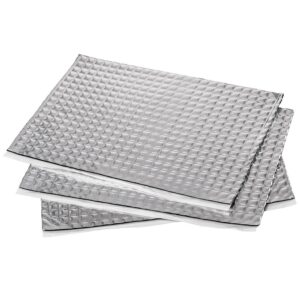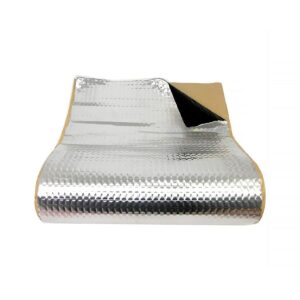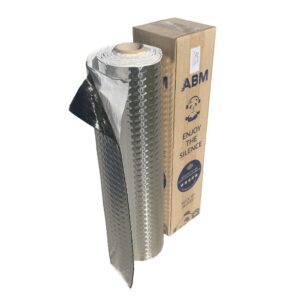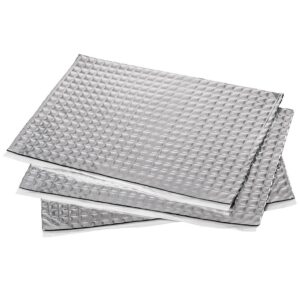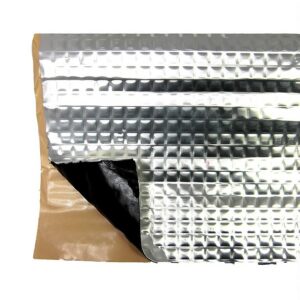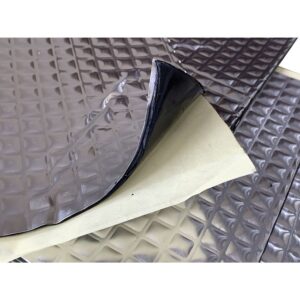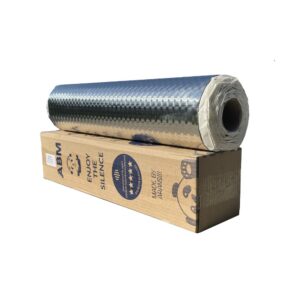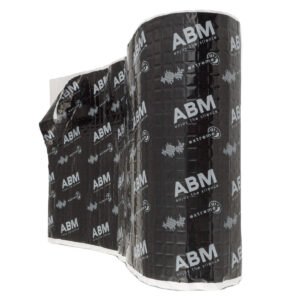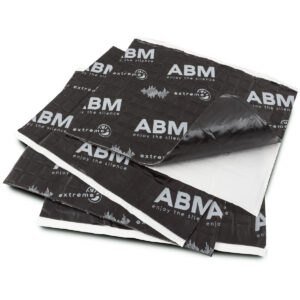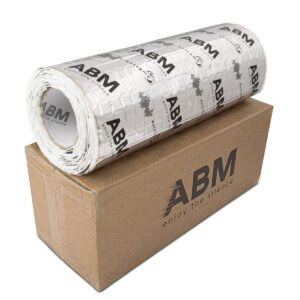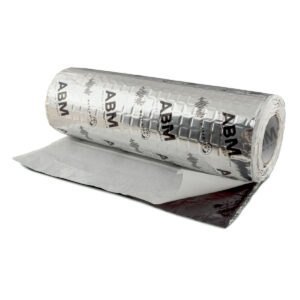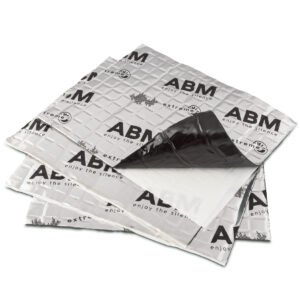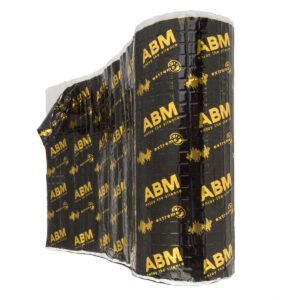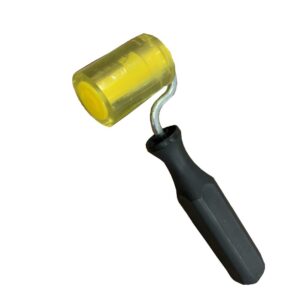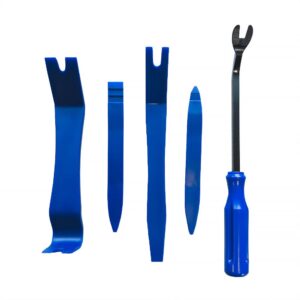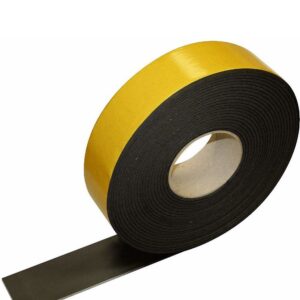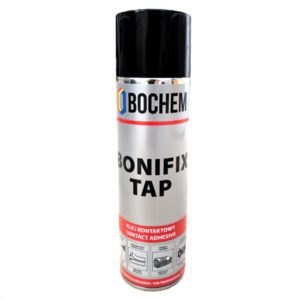Electric vehicles are revolutionizing the automotive industry worldwide. However, the quiet operation of electric motors reveals new acoustic challenges. Noises that were previously masked by loud internal combustion engines are now clearly audible. Sounds originating from electronic systems, cooling systems, and high-frequency vibrations require specialized solutions.
Butyl soundproofing mats provide an answer to the increasing demands for acoustic comfort in electromobility. Their advanced vibration damping and noise reduction properties make them an essential component of modern electric vehicles. The effectiveness of these materials in eliminating unwanted sounds directly translates into driving quality and user satisfaction.
The proper application of butyl mats in electric vehicles requires understanding the specifics of their operation. Differences in acoustic characteristics between internal combustion engines and electric motors determine the choice of appropriate insulation solutions. Investing in high-quality soundproofing mats brings long-term benefits for comfort and vehicle value.
Why Do Electric Vehicles Need Special Acoustic Insulation?
Electric motors generate a completely different acoustic profile than combustion units. They operate much more quietly but produce specific high-frequency sounds. Whistling, squealing, and buzzing from electronic systems become dominant noise sources. Frequencies range between 500-8000 Hz, which is particularly bothersome to the human ear.
The lack of masking by combustion engine noise makes other sounds distinctly audible. Tire noise, wind, body vibrations, and sounds from the air conditioning system were previously almost imperceptible. Now they dominate the passenger cabin and significantly affect driving comfort.
Acoustic Characteristics of Electric Motors
Electric motors generate noise at frequencies proportional to rotational speed. At low speeds, sounds in the 200-1000 Hz range dominate. Higher speeds produce noise between 2000-8000 Hz. Pulse-width modulation in motor controllers creates a characteristic high-frequency whistle.
Power converters and inverters introduce additional sources of electronic noise. Switching of IGBT transistors generates pulses at frequencies of 10-20 kHz. Although these exceed the audible threshold, harmonics fall within the audible range. The result is an unpleasant squeal and buzzing.
Cooling systems for electric motors also contribute to increased noise levels. Cooling fans operate at high rotational speeds. Coolant pumps generate vibrations transmitted through the vehicle structure. All components require effective acoustic insulation.
The Impact of Lack of Noise Masking
Traditional combustion vehicles mask most sounds with engine background noise. Combustion noise, exhaust systems, and mechanical vibrations create broadband noise that conceals subtle sounds from other sources. Electric vehicles lack this natural masking effect.
The result is a clear audibility of previously unnoticed sounds. Bearing noise, gear vibrations, and sounds from the steering system become bothersome. Passengers notice every creak, crack, and rustle. Acoustic comfort significantly decreases without proper insulation.
Main sources of noise in electric vehicles:
- High-frequency whine of electric motors
- Electronic noise from power converters
- Noise from cooling and ventilation systems
- Vibrations transmitted through the body structure
- Sounds from the steering and suspension systems
The difference in frequency spectrum between combustion engine vehicles and electric vehicles requires a new approach to acoustic insulation. Traditional soundproofing materials were mainly designed for low frequencies. Electric vehicles require solutions effective in the mid and high-frequency ranges.
How do butyl mats reduce high-frequency noise from electric motors?
Butyl mats are characterized by exceptional effectiveness in damping vibrations and high-frequency noise. The material’s structure based on butyl rubber provides excellent damping properties. The flexibility and density of the material allow for efficient absorption of vibration energy across a wide frequency range.
The operating mechanism of butyl mats is based on converting mechanical energy into heat. Vibrations transmitted through the vehicle structure are absorbed by the flexible material. The vibration energy is dissipated as heat, resulting in a significant reduction in vibration amplitude. This process is especially effective for frequencies characteristic of electric motors.
Vibration damping mechanism
Butyl features a high internal loss factor. This parameter defines the material’s ability to dissipate vibration energy. The value for butyl ranges from 0.5 to 0.8, which is significantly higher than that of other elastomers. A high value translates into effective vibration damping over a broad frequency range.
The molecular structure of butyl ensures optimal flexibility at operating temperatures. The material maintains its damping properties within a temperature range from -40°C to +80°C. Thermal stability is crucial for automotive applications where temperatures can vary significantly.
The thickness of the butyl mat directly affects damping effectiveness. Mats with a thickness of 2-4 mm are optimal for most automotive applications. Greater thickness increases mass and stiffness, which may negatively impact vehicle characteristics. Lesser thickness limits low-frequency damping effectiveness.
Effectiveness across different frequency ranges
Butyl mats show the highest effectiveness within the 200-2000 Hz frequency range. This range corresponds with dominant frequencies generated by electric motors. Damping effectiveness in this range can reach 15-25 dB, representing a significant reduction in noise levels.
For higher frequencies (2000-8000 Hz), effectiveness slightly decreases but remains at a high level. Noise reduction ranges from 10-20 dB depending on thickness and material quality. These values are sufficient to significantly improve acoustic comfort in electric vehicles.
The combination of butyl mats with other insulating materials can enhance effectiveness across the entire frequency spectrum. Polyurethane foam or mineral fibers complement the properties of butyl in the high-frequency range. The result is comprehensive acoustic insulation tailored to the specifics of electric vehicles.
Tip: The optimal thickness of butyl mats for electric vehicles is 2-3 mm, providing the best balance between damping effectiveness and added vehicle weight.
Technical Properties of Butyl Mats in Automotive Applications
Butyl mats intended for automotive applications must meet strict technical requirements. Resistance to operating temperatures, vibrations, and chemical agents is crucial for long-lasting effectiveness. Materials must maintain their properties throughout the vehicle’s service life, which can range from 15 to 20 years.
The density of automotive butyl mats typically ranges from 1.2 to 1.8 g/cm³. Higher density increases damping effectiveness but also adds weight to the vehicle. The optimal density represents a compromise between performance and impact on vehicle characteristics. Manufacturers offer various options tailored to specific applications.
Mechanical and Thermal Parameters
The elastic modulus of butyl mats ranges from 1 to 10 MPa depending on composition and structure. A low modulus ensures good flexibility and adaptability to irregular surfaces. The material must be flexible enough to conform to complex shapes of body components.
The operating temperature range for automotive butyl mats is -40°C to +120°C. The lower limit is important for use in cold climates. The upper limit must account for temperatures in the engine compartment and other high-temperature areas. Stability of properties across this range is critical.
The thermal expansion coefficient of butyl is approximately 200 ppm/°C. This relatively low value minimizes thermal stresses during heating and cooling cycles. Low expansion prevents delamination of the mat from the substrate during temperature changes.
Chemical and Environmental Resistance
Butyl mats exhibit excellent resistance to most automotive fluids. Engine oils, brake fluids, and coolants do not negatively affect material properties. Hydrocarbon resistance is especially important in automotive applications.
UV resistance is ensured by added stabilizers. Materials exposed to sunlight retain their properties over long periods. UV degradation is minimal when the material composition is correct.
Butyl’s hygroscopicity is very low, preventing moisture absorption. Moisture could adversely affect adhesive and mechanical properties. Low hygroscopicity ensures property stability regardless of humidity conditions.
| Property | Value | Unit |
|---|---|---|
| Density | 1.2-1.8 | g/cm³ |
| Temperature range | -40 to +120 | °C |
| Loss factor | 0.5-0.8 | – |
| Elastic modulus | 1-10 | MPa |
| Coefficient of thermal expansion | 200 | ppm/°C |
Tip: When selecting butyl mats, pay attention to quality certificates and compliance with automotive standards, which guarantee long-lasting effectiveness and safety of use.
ABM Butyl Mats in the ABM Insulation Store
ABM Insulation offers a wide range of butyl mats designed for automotive applications. The products available in the offer have been specially developed to meet the requirements of electric and hybrid vehicles. Advanced manufacturing technology ensures high quality and effective damping across a wide frequency range.
The assortment includes various mat variants tailored to specific applications. Each product features defined technical parameters optimized for different vehicle areas. The variety allows for selecting the optimal solution for every soundproofing project.
ABM Professional Butyl Mats
The Professional butyl mats series represents the core product line intended for professional automotive use. The mats offer an optimal quality-to-price ratio while maintaining high damping effectiveness. Available thicknesses range from 1.5 to 3.0 mm, allowing adaptation to various requirements.
The structure of Professional mats is based on high-quality butyl rubber with mineral fillers added. This composition provides excellent damping properties while preserving flexibility and surface adaptability. The adhesive layer enables easy installation without the need for additional bonding agents.
The operating temperature of Professional mats is -30°C to +90°C, covering most automotive applications. Resistance to operational fluids and atmospheric factors ensures long-lasting effectiveness. The material retains its properties for at least 10 years under proper use.
Butyl Soundproofing Mats ABM Professional in the ABM Insulation store
ABM Xtreme Butyl Mats
The Xtreme series represents the highest class of butyl mats offered by ABM Insulation. These products are designed for the most demanding applications where maximum damping effectiveness is required. The advanced material formula provides exceptional properties across a wide frequency range.
The thickness of Xtreme mats ranges from 2.0 to 4.0 mm with a density of 1.6 to 1.8 g/cm³. Higher density translates into increased damping effectiveness, especially in the low-frequency range. The material features a loss factor of 0.7 to 0.8, which is among the highest values available on the market.
The extended operating temperature range (-40°C to +120°C) allows for use in the most demanding conditions. The reinforced structure provides resistance to extreme mechanical and thermal stresses. The Xtreme series is recommended for sports and luxury vehicles where acoustic comfort is a priority.
Butyl Soundproofing Mats ABM Xtreme in the ABM Insulation store
ABM Xtreme Premium Self-adhesive Butyl Soundproofing Mat in rolls, 2.5mm, 2m2
Acoustic Butyl Mat Self-adhesive ABM Xtreme Premium in rolls, 2.0mm, 2m2
Installation Accessories
ABM Insulation’s comprehensive offer also includes accessories essential for professional installation of butyl mats. Specialized tools, cleaning agents, and auxiliary materials are available. A complete set of accessories ensures proper installation and maximum effectiveness of the soundproofing system.
Pressure rollers in various sizes allow for even distribution of pressure during installation. Cutting knives with replaceable blades enable precise fitting of mats to surface shapes. Degreasing agents prepare the surface for installation, ensuring optimal adhesion.
Accessories in the ABM Insulation store
ABM polyurethane mounting roller – pressure roller
Tip: Before purchasing butyl mats, carefully measure the surfaces intended for soundproofing and choose the appropriate material thickness depending on the available installation space.
Best Installation Locations for Butyl Mats in an Electric Vehicle
The effectiveness of a soundproofing system in an electric vehicle largely depends on selecting the proper locations for installing butyl mats. Analyzing noise sources and transmission paths allows for optimal placement of insulating materials. Strategic positioning of mats ensures maximum noise reduction with minimal material usage.
Priority is given to soundproofing areas directly related to the electric motor and electronic systems. The engine compartment, driveshaft tunnel, and power unit mounting areas require special attention. Vibrations from these areas are transmitted through the body structure into the passenger cabin.
Priority Areas in the Engine Compartment
The engine compartment cover serves as the first barrier against noise generated by the power unit. Installing butyl mats on the inner side of the cover significantly reduces sound transmission into the cabin. The cover surface is relatively large and easily accessible during installation.
The bulkheads separating the engine compartment from the passenger cabin require comprehensive soundproofing. Butyl mats installed on the firewall eliminate vibration transmission through the structure. Special attention should be paid to cable and pipeline passages, which may act as acoustic bridges.
The mounting elements attaching the electric motor to the body are key points for vibration transmission. Soundproofing brackets and mounting arms significantly reduces structural noise. Butyl mats installed near mounting points effectively dampen vibrations before they spread.
Floor and Center Tunnel
The passenger cabin floor is the primary path for noise transmission from the drivetrain. Installing butyl mats over the entire floor surface provides comprehensive insulation. Areas directly above the electric motor and gearbox are particularly important.
The central tunnel in vehicles with rear-wheel drive transmits vibrations from the rear part of the drivetrain. Soundproofing the tunnel with butyl mats eliminates this noise transmission channel. Installing material inside the tunnel is more effective than external application.
The body sills are structural elements that transmit vibrations over considerable distances. Soundproofing the sills with butyl mats interrupts noise transmission paths between different parts of the vehicle. Installation requires partial removal of carpeting, but effectiveness is very high.
Doors and Body Components
Vehicle doors can resonate due to vibrations transmitted through the body structure. Installing butyl mats on the inner side of door panels eliminates resonances and improves acoustic comfort. The material should be applied evenly, avoiding mass concentration in one spot.
Body pillars transmit vibrations between various structural elements. Soundproofing pillars with butyl mats interrupts these transmission paths. Access to pillars may require removal of trim, but effectiveness is significant.
The vehicle roof can resonate due to high-frequency vibrations. Installing butyl mats on the inner side of the roof eliminates resonances and enhances acoustic comfort. It is especially important to soundproof areas above passengers’ heads.
Tip: Installation of butyl mats should begin with areas having the greatest impact on acoustic comfort—engine compartment and cabin floor—and then gradually extend to other body components.
Impact of Soundproofing Mats on Electric Vehicle Range and Performance
Adding soundproofing mats to an electric vehicle inevitably increases its total weight. Every kilogram of added mass affects energy consumption and vehicle range. A typical soundproofing system can add 15–30 kg, resulting in a 2–4% increase in energy consumption. These values are relatively small compared to the comfort benefits.
Modern butyl mats feature optimized density that minimizes impact on vehicle weight. Manufacturers strive to achieve maximum damping effectiveness with minimal material mass. Advanced compositions allow thickness reduction while maintaining insulating properties.
Energy Consumption Impact Analysis
An increase in vehicle weight by 20 kg results in an energy consumption rise of approximately 0.3–0.5 kWh/100 km in mixed driving cycles. This value may vary depending on driving style and operating conditions. Urban driving shows less sensitivity to weight due to frequent regenerative braking.
Highway driving is more sensitive to vehicle weight because of constant drivetrain load. Energy consumption increase can reach 0.7–1.0 kWh/100 km at highway speeds. These values should be considered when planning long trips.
Energy management systems in modern electric vehicles automatically compensate for increased weight. Optimization algorithms take into account the actual vehicle weight and adjust drive strategies. The result is minimizing the impact of additional weight on performance.
Mass Distribution Optimization
Strategic placement of soundproofing mats can minimize the negative impact on vehicle characteristics. Concentrating mass in the lower part of the body lowers the center of gravity and improves stability. Avoiding adding mass to the upper parts of the vehicle is crucial for maintaining driving properties.
Even distribution of soundproofing mats prevents local mass concentrations. Uneven loading can negatively affect suspension geometry and turning characteristics. Planning material placement should consider the vehicle’s mass distribution.
Installing mats in areas with high structural stiffness increases damping effectiveness. Elements with low stiffness may deform under additional weight, reducing insulation effectiveness. Structural stiffness analysis is important for system optimization.
Comparison of Impact on Range:
- Small soundproofing system (10-15 kg): Range reduction by 1-2%
- Medium soundproofing system (20-25 kg): Range reduction by 2-3%
- Comprehensive soundproofing system (30-35 kg): Range reduction by 3-5%
Tip: It is optimal to use selective soundproofing, focusing on areas with the greatest impact on acoustic comfort, which minimizes added weight while maintaining effectiveness.
Installation and Surface Coverage Efficiency of Soundproofing Mats in Electric Vehicles
The effectiveness of the soundproofing system depends not only on material quality but also on proper installation. Professional installation of butyl mats requires appropriate surface preparation, precise fitting, and even pressing. Installation errors can significantly reduce system effectiveness and lead to premature material degradation.
Surface coverage with soundproofing mats does not need to be 100% to achieve satisfactory results. Studies show that covering 60-80% of the surface provides 85-95% of maximum damping effectiveness. Strategic placement of material in key areas is more efficient than full coverage of all surfaces.
Surface Preparation for Installation
Cleaning the mounting surface is a key installation step. Residues of dust, oil, and other contaminants can negatively affect material adhesion. Metal surfaces should be degreased with specialized agents and dried before mat installation.
The surface temperature during installation should be 15-25°C for optimal adhesion. Too low a temperature may cause poor adhesive bonding. Too high a temperature can lead to premature curing of the adhesive before proper pressing.
Checking surface flatness is important for damping effectiveness. Irregularities greater than 2-3 mm may cause incomplete material adhesion. Local irregularities can be leveled with filler or thicker mats can be used.
Installation and Pressing Techniques
Installation of butyl mats should begin from one edge and gradually move in the opposite direction. This technique prevents the formation of air bubbles under the material. Air trapped beneath the mat can significantly reduce damping effectiveness.
Pressing the material should be even and gradual. The pressure roller should be guided in one direction with consistent pressure. Excessive pressure can damage the material’s structure, while insufficient pressure will not ensure proper adhesion.
The joints between adjacent mats require special attention. The overlap should be 10-15 mm to ensure coverage continuity. Lack of continuity can create acoustic bridges that reduce system effectiveness.
Surface Coverage Optimization
Modal vibration analysis of the vehicle body allows identification of areas with the greatest impact on noise. Concentrating soundproofing mats in these areas ensures maximum effectiveness with minimal material use. Computer modeling can assist in optimizing placement.
Covering 70% of the cabin floor surface provides a noise reduction of 12-15 dB. Full coverage increases effectiveness by only 2-3 dB with twice the material consumption. Optimal placement is more cost-effective.
Areas with high stiffness require less coverage than flexible elements. Sheets thicker than 1.5 mm can be covered at 50-60%. Thin sheets (below 1.0 mm) require 80-90% coverage for effective damping.
| Vehicle Area | Optimal Coverage | Damping Effectiveness |
|---|---|---|
| Cabin Floor | 70-80% | 12-15 dB |
| Doors | 60-70% | 8-12 dB |
| Engine Compartment Shield | 80-90% | 10-14 dB |
| Center Tunnel | 90-100% | 15-18 dB |
Tip: Before starting installation, prepare a cardboard template that allows precise fitting of mats to the surface shape and minimizes material waste.
Long-Term Benefits of Using Butyl Mats in Electric Vehicles
An investment in high-quality soundproofing mats brings benefits beyond improving acoustic comfort. Long-term effects include increased vehicle value, reduced driver fatigue, and improved overall operational quality. Studies show that vehicles with professional soundproofing systems retain higher market value throughout their service life.
Noice reduction inside the passenger cabin directly impacts user health and comfort. Prolonged exposure to noise above 70 dB can lead to fatigue and stress. Effective soundproofing lowers noise levels to 55-65 dB, significantly enhancing travel comfort.
Impact on Vehicle Value
Electric vehicles equipped with professional soundproofing systems achieve higher prices on the secondary market. The difference can range from 3-8% of the vehicle’s value depending on class and age. Buyers increasingly consider acoustic comfort as a selection criterion.
Prestigious automotive brands typically use advanced soundproofing systems in their electric vehicles. Equipping a vehicle with a similar system enhances its perception and class. Investing in soundproofing can pay off when selling the vehicle.
The durability of butyl mats ensures the long-term effectiveness of the system. High-quality materials retain their properties for 15-20 years of use. The lack of need for system replacement or maintenance increases its economic appeal.
Health and Comfort Benefits
Reducing noise levels in the cabin has a documented impact on decreasing driver fatigue. Studies show that lowering noise by 10 dB can reduce fatigue by 20-30% during long trips. This effect is especially noticeable in highway traffic.
Improved quality of phone calls and communication between passengers is a direct result of cabin soundproofing. Hands-free systems work much more effectively in a quiet cabin. The quality of recordings and video conferences also improves.
Better audibility of audio systems allows for using lower volume levels. This reduces ear fatigue and enhances comfort when using multimedia systems. Sound quality is noticeably better in a soundproofed cabin.
Long-Term System Reliability
Butyl mats are characterized by high resistance to degrading factors. Chemical stability ensures property retention over a long period. The material does not degrade under operating temperatures or moisture exposure.
The lack of maintenance requirements for the soundproofing system is a significant advantage of butyl mats. After proper installation, the system operates maintenance-free throughout the vehicle’s service life. This eliminates service costs associated with system upkeep.
Compatibility with other vehicle systems ensures trouble-free operation. Butyl mats do not interfere with electronic or mechanical systems. Dimensional stability prevents stress formation in the body structure.
Long-Term Economic Benefits:
- Increase in vehicle value by 3-8%
- No maintenance costs for the soundproofing system
- Reduction in audio system wear by 15-25%
- Decrease in driver fatigue by 20-30%
- Improved passenger comfort during long trips
Documenting the installation of the soundproofing system using certified materials can increase the vehicle’s value and facilitate its future sale.
Summary
Butyl soundproofing mats are an essential component of modern electric vehicles, effectively addressing acoustic issues characteristic of this technology. The specific operation of electric motors requires a new approach to acoustic insulation, and butyl mats perfectly meet these demands. Their exceptional vibration damping properties at high frequencies provide a significant improvement in driving comfort.
A professionally installed soundproofing system offers benefits beyond improving acoustic comfort. Increasing the vehicle’s value, enhancing the health and comfort of users, and ensuring the system’s long-term reliability make investing in butyl mats economically justified. The proper selection of materials and installation locations allows for optimal results with minimal impact on the vehicle’s characteristics.
The development of electromobility means that the importance of effective soundproofing systems will continue to grow. Butyl mats, as a proven and reliable solution, will remain a key element in providing acoustic comfort in the vehicles of the future.


